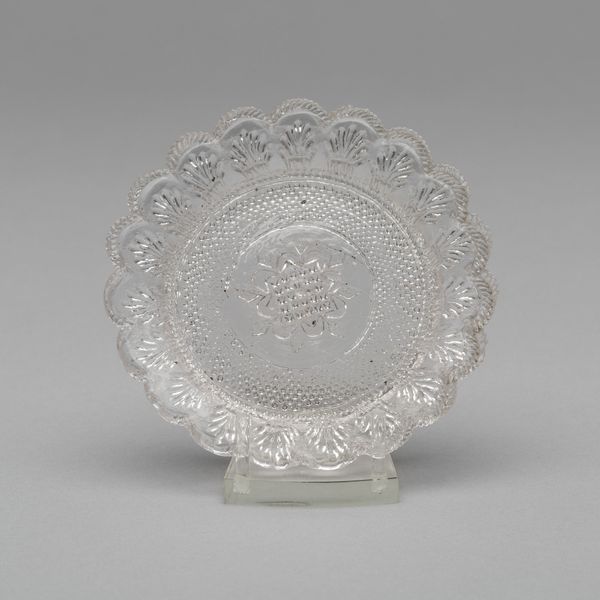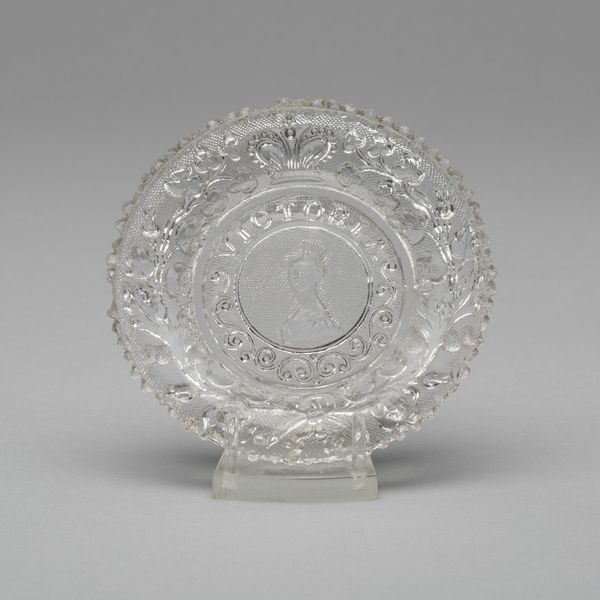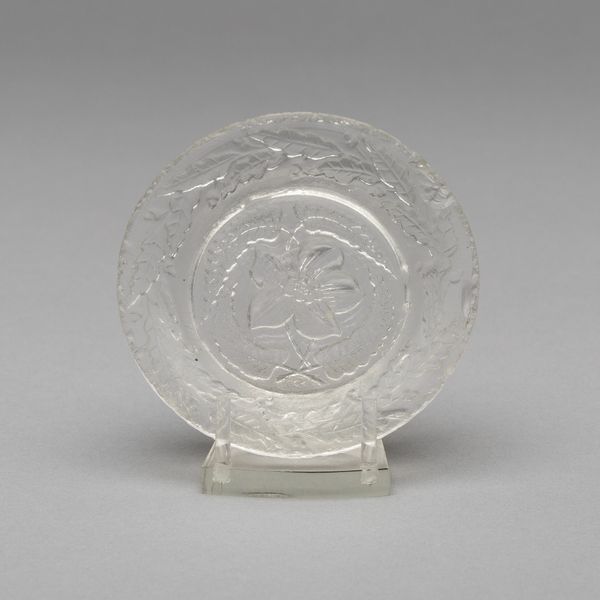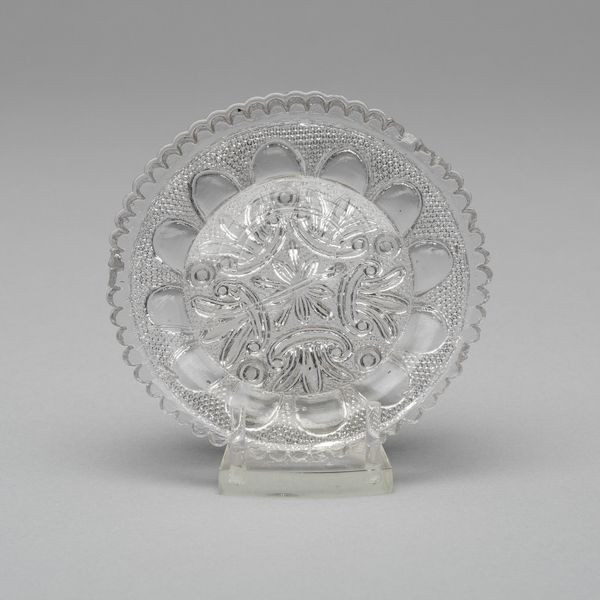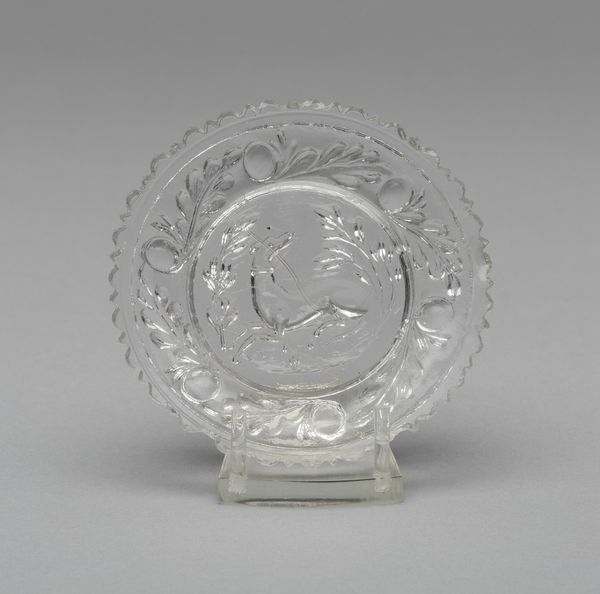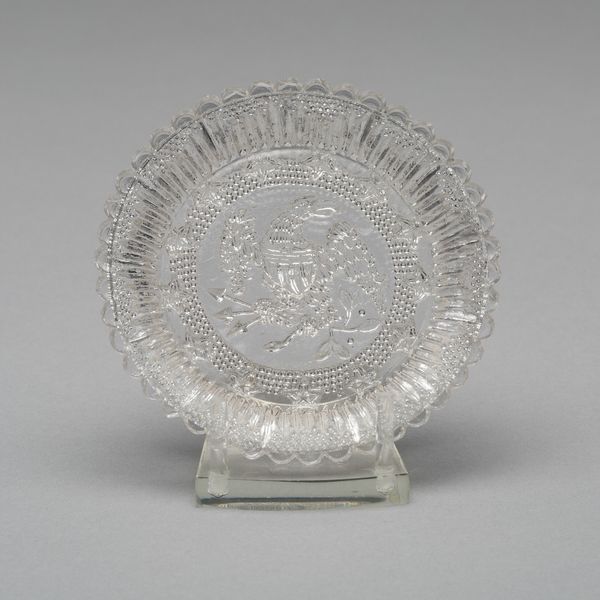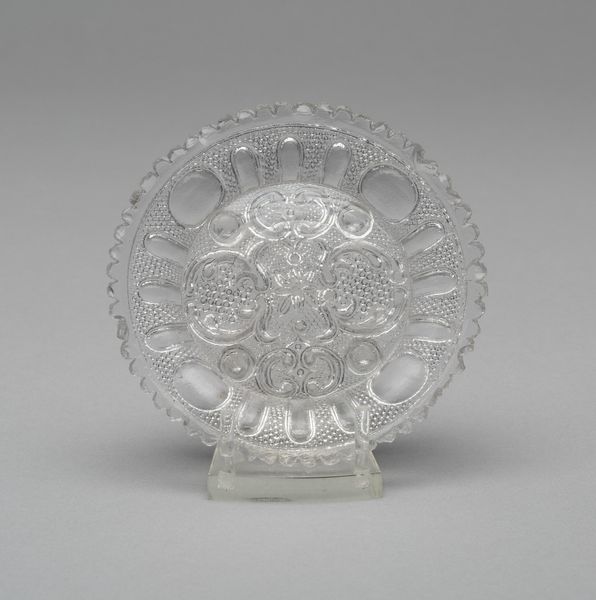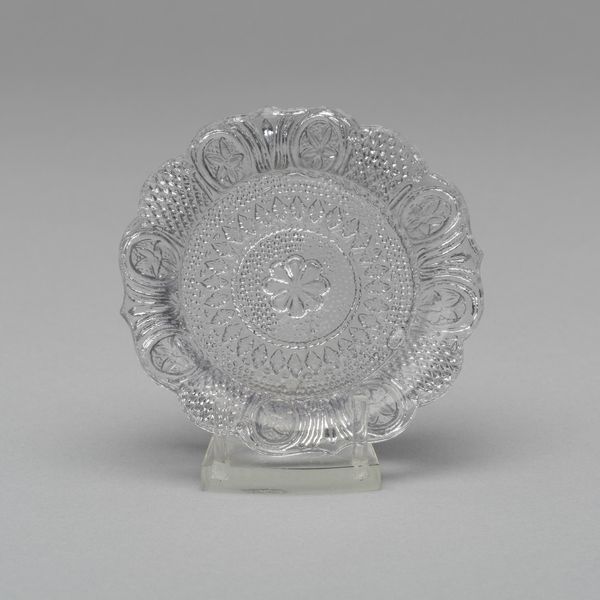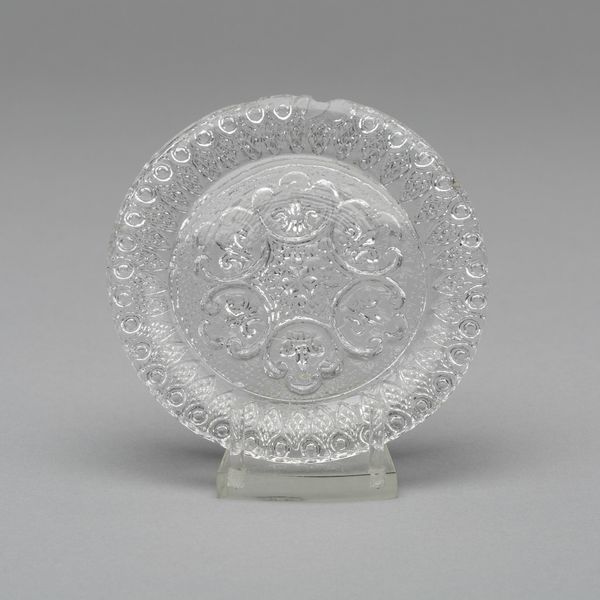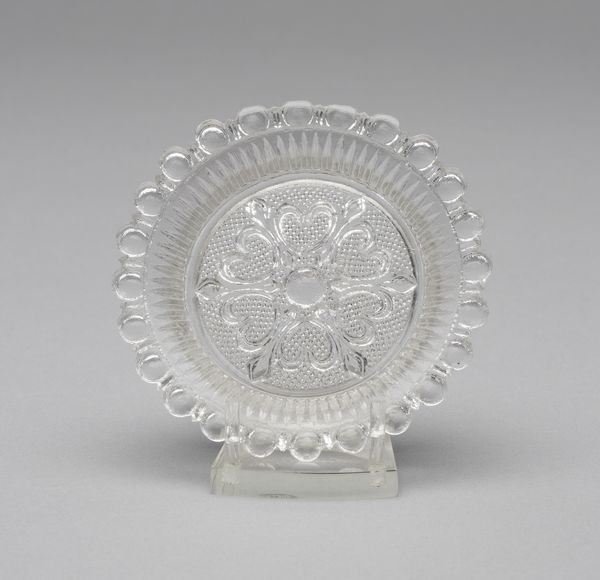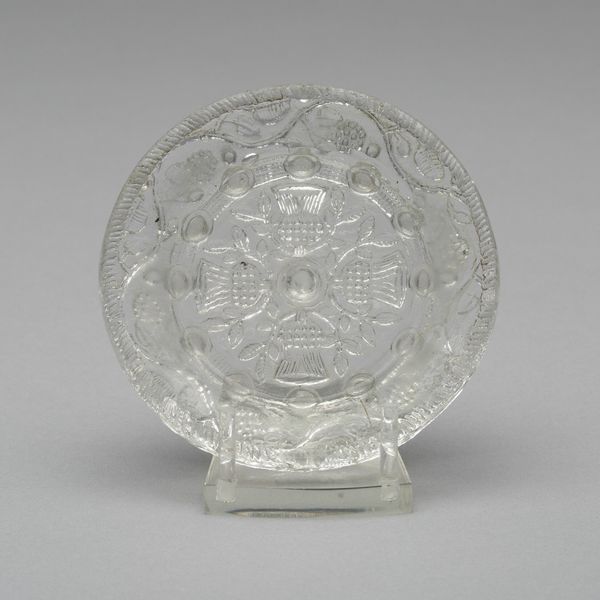
glass
#
neoclassicism
#
glass
#
decorative-art
Dimensions: diam. 9.5 cm (3 3/4 in.)
Copyright: Public Domain
Editor: This "Cup Plate," made around 1828, comes to us from an anonymous artist and resides at the Art Institute of Chicago. It's so delicate, like spun glass. I'm struck by how intricate the molded details are. What stands out to you in this work? Curator: Immediately, I consider the social function of this seemingly simple object. A cup plate served a practical purpose, but its materiality elevates it. How were these intricate patterns impressed into the glass? Was it pressed or blown into a mold? And how does the act of consuming tea or coffee transform from a need to a social performance through this decorated item? Editor: That's a great point. I was focused on the artistry, but thinking about the everyday use… Did the mass production of glass like this impact the role of artisans and handmade goods? Curator: Precisely! This object lives at the intersection of art, industry, and daily life. Neoclassical motifs—leaves and symmetrical arrangements—often speak of aspirations to luxury, and it's essential to explore how mass production influenced labor. The maker's identity is erased, reflecting a new kind of industrialized art. How do you reconcile that anonymity with its inherent artistry? Editor: It makes me wonder who actually designed the molds and operated the machinery. They are nameless, yet they shaped our aesthetic experience. Curator: Exactly! The "artist" then isn't necessarily the named creator but encompasses all hands involved in production and the complex societal factors. Next time you sip from a glass, consider the unseen labor embedded in its creation. Editor: That makes me see even functional objects in a completely different light now, considering both their beauty and social production. Thanks for sharing your perspective.
Comments
No comments
Be the first to comment and join the conversation on the ultimate creative platform.
